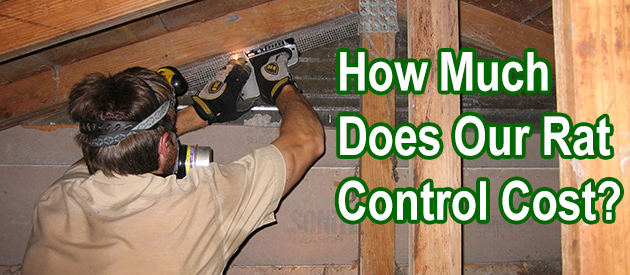San Diego County, San Diego Rat Control Situation:
Hi David, Is a UV blacklight still useful, exterior-wise, if it rains after the rodents leave their urine stains? I am in the process of performing exterior maintenance to better exclude my roof rats. 1) I have a 25 year old cedar shake roof in San Diego California with openings under each shake along the rake edge of the roof at the gable ends of my house. There's no drip edge, i.e. under the shakes I have roofing paper (now somewhat curled) that runs more or less up to and rests right atop the fascia board. Because I have skip sheathing, and since the cross section of a shake is a wedge that is up to one inch at the upper, thick end, this appears to create many huge entry points along the rake edges even though the sheathing is rabbeted into the fascia board. As a result, I'm thinking of getting a UV blacklight to use outside the house to sleuth for urine stains along the upper edge of the gable end shakes and fascia boards. My question is, how easily does the winter rain wash away the urine, rendering this a pointless exercise? 2) I noticed a new product called "rat-out gel" and was thinking of applying it along the rake edges mentioned above. Or, maybe I should just buy many rolls of X-Clude and use that instead. Or maybe both. Any comment? Thanks very much for your website, Doug
My response: First off, I do not have experience using UV lights to detect rat urine. But I do suspect that rain will severely limit the effectiveness of this approach. I have never heard of Rat-Out Gel or XClude, but I typically stick to physical barriers rather than repellent type devices. If your roof makes this impossible, you might have a tough time keeping the rats out.
San Diego Rat Control Tip of The Week
The Myth That Poison Makes Rats Thirsty And Die Outside
No, rat poison doesn't make the rat thirsty. Poison doesn't make the rodent go out to drink, and along these lines die outside. Rat poison makes the rat dormant, and it dies any place it happens to be at when the poison takes effect. Since the rats living inside a house or building invest most of their energy inside the structure, they usually die inside that building, not outside.
Will Poison Make A Rat Thirsty And Die? (NO - That's A Myth)
Individuals use poisons since they think it is a protected, viable, hands-off strategy for evacuating pests. They have certain thoughts regarding it, but what amounts of those thoughts are true? One thought many convey is that poison will make rodents thirsty. When they consume the poison, they will out of nowhere have a solid, insatiable thirst. That will lead them outside, looking for water, where they will inevitably die. With this thought, poison appears to be the undeniable answer. It gets the rats out and kills them, getting rid of your concern with few to no drawbacks. The problem is, none of that is valid. Poison won't have this impact on rats or mice, or some other animal so far as that is concerned.
Using poison doesn't prompt thirst. It won't cause the rat(s) to leave the property, and go outside to find water. None of this is true; they are all myths. Poison will kill rats, however, not through thirst. Poisons kill rats in different ways, contingent upon the kind of poison you use. No poison will make the rodent want to leave the property whatsoever.
With each one, there is a higher possibility of the rat dying in your home. Ordinarily, this is going to mean within your dividers. Poisoned rats and mice are likely going to build up inside the dividers, and that is if they all eat the poison. There are various issues with poison, such as its ability to kill other animals, and the pain it inflicts on the rats, which adds to the negatives of it as a solution to pest invasions.


